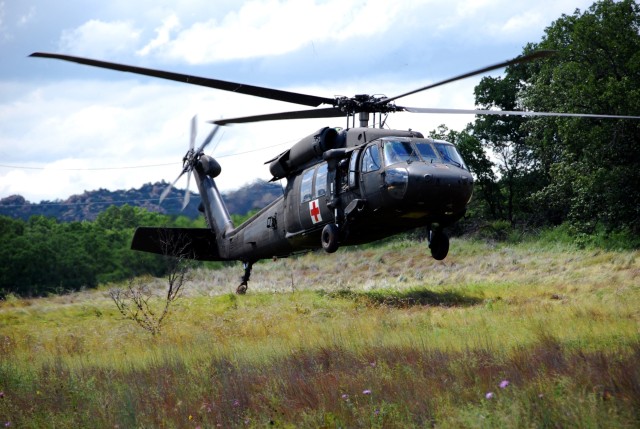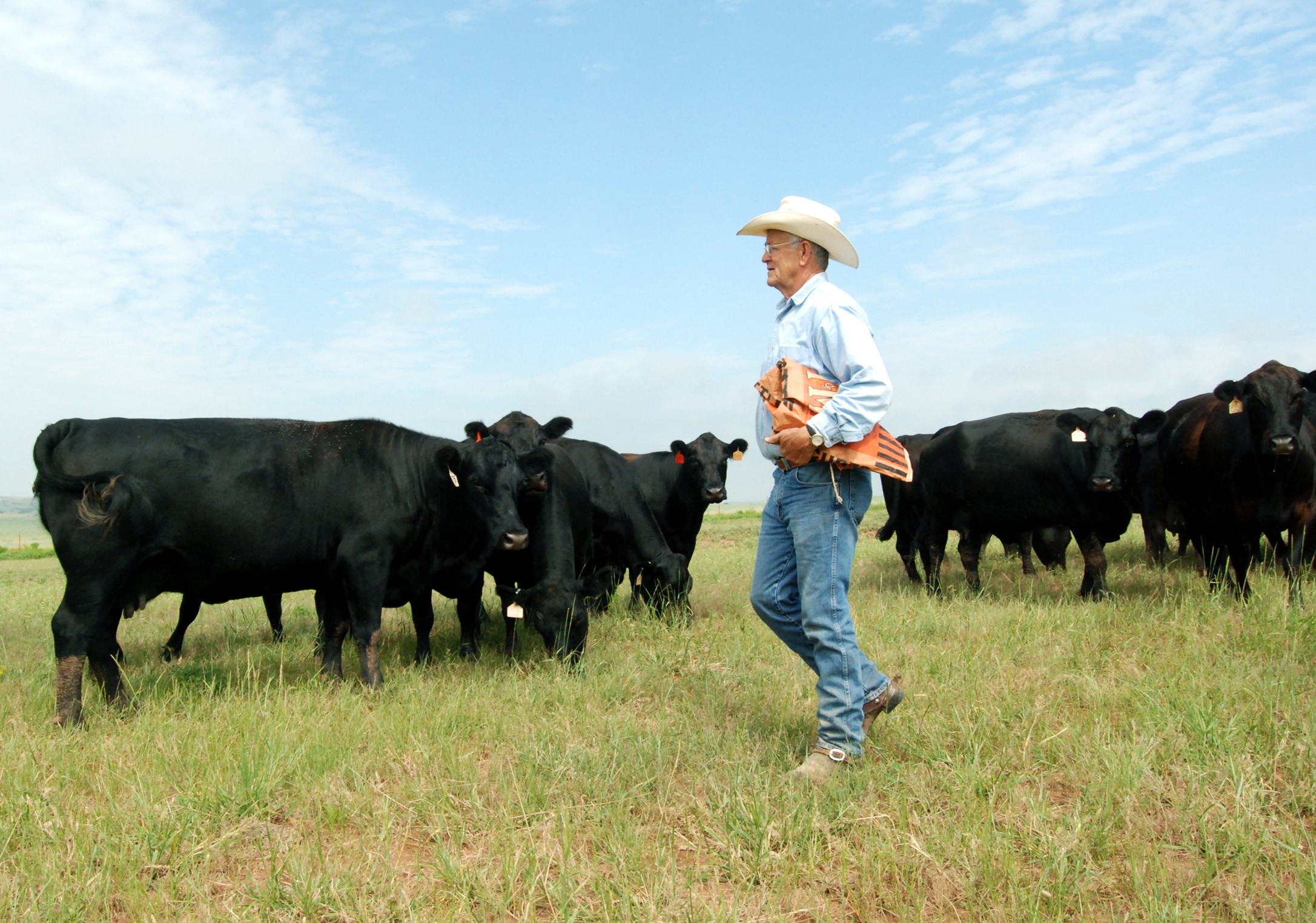FORT SILL, Okla. (Army News Service, Aug. 21, 2007) - Moments after receiving word of casualties in the battlefield, the blades of a U.S. military helicopter at the main base begin rotating. Within minutes, flying above barren fields and urban areas, the crew races toward the casualties knowing the significance of each tick of the clock. After a few tense moments at a remote landing zone, the wounded are secured in the chopper and the crew speed to the military hospital where lifesaving medical care awaits.
That scene has played out many times in both Iraq and Afghanistan during the past few years. On this day it took place during a mock training exercise in a pasture near Fort Sill, Okla.
Thanks to supportive patriots - local Oklahoma citizens and businesses willing to volunteer use of their private fields and airports - military personnel heading overseas as part of the war on terror receive the most realistic training possible.
"This gives Soldiers the opportunity to plan ahead since they'll know what to expect in theater," said Capt. Jeffrey D. Hay, company commander, 2nd Battalion, 291st Aviation Regiment, based out of Fort Riley, Kansas. "Use of these airfields allows us to replicate the same types of missions that will be encountered in (Iraq and Afghanistan)."
Tasked with the responsibility for training, readiness oversight and mobilization of designated National Guard and Army Reserve units in 21 states, First Army's Division West (DIVWEST) employs realistic theater immersion training. Soldiers are trained and must repeatedly demonstrate proper procedures while being exposed to realistic situations until they intuitively make the right decisions.
"Without the use of these airfields, we would not be able to do training as realistic as this," Capt. Hay said. "The owners of these airfields and farms allow us to drive teams there in order to receive the helicopters as a team in theater would. They can pick up the passengers, account for them ... it has worked out great for us."
Having an abundance of landing zones to choose from within the area allows leaders to simulate the actual layout of key locations in Iraq and Afghanistan in relation to the main U.S. bases in those countries.
"Soldiers will be accustomed to landing in a forward operating base and can become more familiar with them and the layout of the area," Capt. Hay said.
Allowing the military to train on their property is something many local citizens are enthusiastic about.
"We're proud to help them in any way we can," said Jim Brewer, a fixed-base operator at the municipal airport in Duncan, Okla. "Being a certain number of miles from Fort Sill worked out great with the military's training mission since their flight time here is very realistic when compared to the layout of areas in Iraq and Afghanistan."
According to Mr. Brewer, during the initial days of military helicopter training missions at the Duncan Municipal Airport more than a year ago, several local citizens were full of questions.
"We had a lot of questions going in, especially during nighttime training missions," said Mr. Brewer. "People didn't know if there were actual emergencies going on or what."
What were once considered annoying helicopter rumblings in the night quickly turned into the sounds of freedom to the locals.
"We explained to them that these were important training missions, and the citizens were very supportive and didn't mind the sounds at all," Mr. Brewer said. "We fully support our military around here because we know they're out there taking care of all of us."
Donnie Coleman, manager of the regional airport in Frederick, Okla., explained that simply using the word "support" for the troops wasn't adequate to explain the mind-set of local citizens.
"We love having them over here," said Mr. Coleman. "They can do what they need to do and we love to help them. Although we may not benefit here directly while they're training, we certainly benefit from them when they're overseas fighting to protect our freedoms."
Local ranchers such as Bob Kerr play a vital role in the training missions as the jagged terrain of their ranches are similar to what Soldiers will actually face on the battlefield.
"I've been told that the area around here is very similar to what Soldiers are facing in the rocky terrain of Afghanistan," said Mr. Kerr, who has lived on his ranch about 15 miles northwest of Fort Sill for the last 35 years. "Too often we take our military personnel for granted. This is my way of returning the favor," he said.
Mr. Kerr said UH-1 "Huey" helicopters flew training missions on his ranch more than twenty years ago, and today's troops, now in UH-60 Blackhawks, are a welcome and familiar sight.
"My family and I admire them and appreciate what they do," he said. "Even my cattle kind of like them," he said after explaining that each cow continues eating and appears unfazed by the whirring of helicopters overhead.
Ultimately, the realistic training will potentially save lives and make our troops more effective on the battlefield since they will gain valuable experience while benefiting from lessons learned here in a peaceful environment.
"They can learn what works and what doesn't while they're here at Fort Sill," said Capt. Hay. "When they finish their training and arrive in the battlefield, they'll know exactly what to do by instinct."
(Sgt. 1st Class Robert R. Ramon writes for the 479th Field Artillery Brigade Public Affairs Office.)




Social Sharing